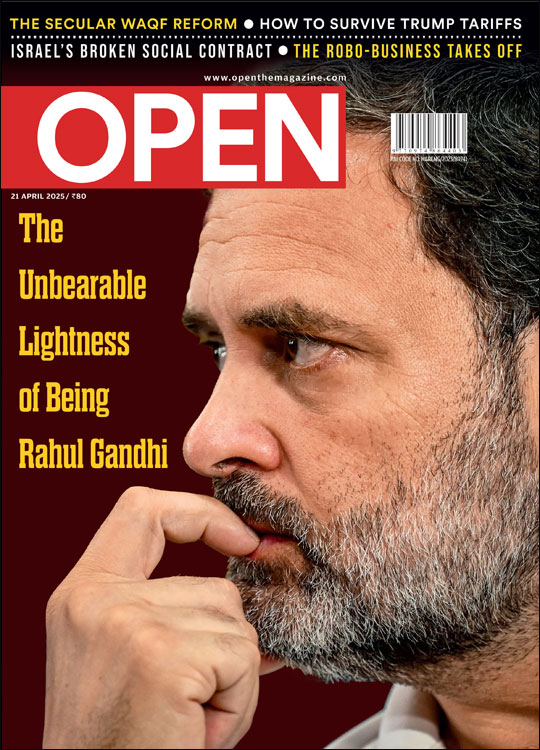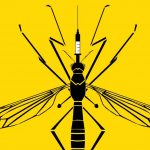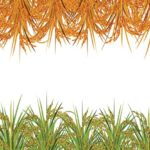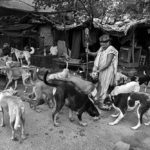The Genetic History of Indians: Are We What We Think We Are?
Fresh research on the genetic history of Indians revives the Aryan migration theory
 Lhendup G Bhutia
Lhendup G Bhutia
 Lhendup G Bhutia
Lhendup G Bhutia
 |
19 Apr, 2018
|
19 Apr, 2018
/wp-content/uploads/2018/04/Arewe1.jpg)
BACK IN 2011, the Hyderabad-based geneticist Kumarasamy Thangaraj was part of a study that looked at lactase persistence, or the ability to consume milk and milk products, in India. This is an unusual trait. Absent in other mammals, a mutation in human genes is believed to have allowed some to be able to digest lactose, the sugar in milk, right into adulthood. Other mammals can’t consume milk past infancy once they’re weaned off it. Even among humans, lactase persistence isn’t universal. More than two- thirds of the world’s population is known to suffer from lactose intolerance: they drink milk only at the risk of nausea, abdominal pain and digestive miseries like diarrhoea.
“All babies produce the gut enzyme lactase,” explains Thangaraj, who works at Hyderabad’s Centre for Cellular and Molecular Biology (CCMB). “But production of the enzyme usually shuts down before adulthood. He and the other researchers looked at 2,300 DNA samples from across the Indian Subcontinent covering all major language groups and geographic regions. Studies in the past had found that the lactase enabling mutation had evolved independently at least four different times in the past 10,000 years, in Europe, the Middle East and Africa. But when Thangaraj and his associates studied DNA samples from India, considered the world’s largest milk producer, they found that this mutation had not occurred independently here. In India, the 13910T, the genetic variant in question, had the same origin as that found among Europeans, suggesting that immigrants might have brought it to India in ancient times. The study also found that this mutation’s spread was uneven, high among northern and western Indians, but sparse among people in the south and east, which suggests it came from the northwest.
That study is one of several that shows the fluidity of our ancient past. It may be contested terrain, but people undeniably moved around, migrated and intermingled like we do now, although over much longer time frames, and we are all children of these movements and mixtures.
But what about India or South Asia, chiefly around 4,000 years ago, the much-contested period around 2000 BCE when the Indus Valley Civilisation was declining and, as some have theorised, an inward migration of the soi- disant Aryans was underway? Genetic studies have shown that most modern-day South Asians are descendants of two major ancestral groups, Ancestral North Indians (genetically close to people in West Asia, Central Asia and Europe) and Ancestral South Indians (unique to South Asia), which had come to form the majority population by the second millennium. How did these groups come to be? Who comprised them? Who were the people of Indus Valley? And did a migration ever take place?
It is a distant period, much argued about. Everything from linguistics and archaeology has been drawn into a storm of claims and counter-claims to serve a variety of narratives. Some scholars contend that a foreign race of the so-called Aryans migrated into or invaded South Asia, which could have either coincided with or resulted in the decline of the Indus Valley Civilisation. They composed texts in Sanskrit and ushered in the Vedic Age. In support of this thesis, philologists have pointed out how a single family tree of languages, the Indo-European group, remains extant across a vast sweep of Eurasia. To many in India, however, the notion of ‘foreigners’ having brought Sanskrit and the Vedic Age to this subcontinent is unpalatable. They argue that it was not a foreign race that brought a proto-Indo-European language to India, but the reverse. People from India took their language and culture elsewhere. They also contend that people of the Indus Valley were early practitioners of a Vedic culture. And then there are others who believe there is not enough evidence to prove either theory.
So far, archaeology and philology have thrown up several interesting if limited answers. But now, increasingly, the focus is shifting to genetic science to address some of the thorny questions about our ancient past.
“I KNOW PEOPLE won’t be happy to hear this,” geneticist Niraj Rai says over the phone from Lucknow. “But I don’t think we can refute it anymore. A migration into [ancient] India did happen.” As head of the Ancient DNA Lab at Lucknow’s Birbal Sahni Institute of Palaeosciences (BSIP), he earlier worked at the CCMB in Hyderabad and has been part of several studies that employed genetics to examine lineages. “It is clear now more than ever before,” he says, “that people from Central Asia came here and mingled with [local residents]. Most of us, in varying degrees, are all descendants of those people.”
Rai is part of a new global study—perhaps the most comprehensive ever, to be published soon—that analyses DNA data from a wide variety of samples across Central, Western and South Asia to draw an elaborate picture of the kind of migrations and admixtures that took place in ancient times in this part of the world. The study is a collaboration of over 90 researchers, some of the most prominent names in genetic science, archaeology and anthropology from a variety of institutes, including Harvard, MIT, the Max Planck Institute in Germany, institutes in Russia, Uzbekistan, Kazakhstan, Italy, Pakistan and other countries, as also the BSIP in Lucknow, Deccan College in Pune and CCMB in Hyderabad. Among the survey’s top researchers is the Harvard geneticist David Reich, a pioneer in this field who has come up with new methods of analysing DNA more accurately.
In the past, genetic studies have thrown up somewhat confusing results. Those focused on Mitochondrial DNA, which is transmitted only from mother to daughter, had suggested very little external infusion into the Indian gene pool over the past 12,500 years. But now that researchers have also traced the descent over millennia of the Y-chromosome, which is transmitted from father to son, they have found that about 17.5 per cent of Indian male lineage belongs to the haplogroup R1a, which is found today across Europe and Central and South Asia, leading some scientists to suggest that the movement into India was probably of male migrants, which would explain why Mitochondrial DNA studies did not show such a pattern of gene dispersal.
“It is clear now more than ever before that people from Central Asia came here. Most of us are descendants of those people” – Niraj Rai, head, Ancient DNA Lab at Birbal Sahni Institute of Palaeosciences, Lucknow
As part of this current study, researchers analysed data from 612 individuals from areas in eastern Iran and the Turan region in Central Asia (Uzbekistan, Turkmenistan and Tajikistan) living between 5600 to 1200 BCE, those living in Kazakhstan between 4700 and 1000 BCE, the western Siberian forest zone between 6200 and 4000 BCE, and the Swat Valley in Pakistan between 1200 BCE and 1 CE. Of these, the DNA of 362 individuals was being examined for the first time. The results were then compared with the genome-wide data of 1,789 people of 246 ethnographically distinct groups in modern day South Asia.
“I THINK THE LARGE nature of this collaboration was very important,” says Vasant Shinde, a senior archaeologist and vice-chancellor at Pune’s Deccan College Post Graduate and Research Institute who was part of the study. “What happens otherwise is that everyone is only working with their own samples. DNA data is very confidential. No one shares data. And whenever a new study is out, there is always some criticism about something being overlooked or missed. When you do a study this way, you get access to DNA data from different parts of the world. And when you put it together, you get to see a much larger picture of movements and admixtures.”
While previous studies had classified current South Asians into descendants of either Ancestral North Indians (ANIs) or Ancestral South Indians (ASIs), the new study posits an even earlier ancestor group, one of hunter-gatherers, that has been given the term Ancient Ancestral South Indians (AASIs). It also suggests that multiple migrations gave rise to ANI populations, not just the influx of one proto Indo-European group, but also of agriculturists from the region that is now Iran.
According to the study, Indus Valley people in all likelihood emerged from a mixed population of those agriculturists and AASIs. On the evidence, between 2300-1500 BCE, a southward spread of genetic ancestry from the Eurasian Steppe occurred, which corroborates what archaeological sites have shown at various pastoralist sites from the Steppe to Turan. ‘These Steppe communities mixed genetically with peoples of the Bactria Margiana Archaeological Complex (BMAC) whom they encountered in Turan…’ the researchers write in the study report. ‘Steppe communities integrated farther south throughout the 2nd millennium BCE, and we show that they mixed with a more southern population.’
The mixing among people from the Steppe region and those of the Indus Valley Civilisation resulted in the emergence of the ANI population; and mixing among Indus Valley people and AASIs gave rise to ASIs.
A lot of this analysis rests on DNA samples extracted from three ancient peoples living between 3100 and 2200 BCE in the BMAC site of Gonur in Turkmenistan and Shahr-i-Sokhta in Iran. It is the analysis of the DNA samples of these three that attempts to establish the movement of the Steppe migrants into South Asia.
Collectively called the Indus Periphery group in the study, the aforementioned three were probably outward migrants from the Indus Valley Civilisation, say researchers; there exists archaeological evidence of trade and material culture exchange between those areas and Indus Valley. They also point towards the genetic similarity between the Indus Periphery group, dated between 3100 and 2200 BCE, and the individuals living in the Swat Valley about a millennium later, between 1200 BCE and 1 CE, the presence of a substantial admixture of AASIs in their samples, and the fact that when compared with the genes of modern-day Indians, they fit as an ancestral population. According to the study, while the three samples exhibit only an Iranian agriculturalist and AASI heritage, those from the Swat Valley a millennium later show the same genetic inheritance, except for one additional contributor: DNA from the Steppe region. This has led the study’s authors to believe that Steppe migrants had reached South Asia by the second millennium.
“It is clear now more than ever before that people from Central Asia came here. Most of us are descendants of those people” – Niraj Rai, head, Ancient DNA Lab at Birbal Sahni Institute of Palaeosciences, Lucknow
Write the authors of the study: ‘A parsimonious hypothesis is that as Steppe MLBA groups moved south and mixed with Indus Periphery-related groups at the end of the [Indus Valley Civilisation] to form the ANI, other Indus Periphery-related groups moved further south and east to mix with AASI groups in peninsular India to form the ASI. This is consistent with suggestions that the spread of the [Indus Valley Civilisation] was responsible for dispersing Dravidian languages, although scenarios in which Dravidian languages derive from pre-Indus languages of peninsular India are also entirely plausible as ASI ancestry is mostly derived from the AASI.’
According to the study, while these three may not necessarily be representative of the ancestry of the entire Indus Valley Civilisation and limited perhaps to its northern fringes, they would no doubt be part of an important ancestry group in the wider Indus region between the third and second millennium.
If the three were indeed from the Indus Valley, one of the interesting aspects of this study is how it shows that even among them, they aren’t genetically the same. One of the samples has 42 per cent AASI ancestry and the other two only 14 and 18 per cent; a greater part of their genes are traceable to agriculturalists in the region that’s now Iran.
According to Shinde, the Indus Valley Civilisation in all likelihood did not have homogenous people. “There will probably be admixture among them too,” he says. “You have to understand, once farming gets established, needs and demands would have grown. They would look for different types of raw materials; there would be movement and regular exchanges with people in other areas for materials. And hence there would surely be mixing between these groups.”
According to the study, Iranian region agriculturalists and AASIs mixed over a broad span of time from 4700 to 3000 BCE. However, it is possible the mixing between these groups happened even earlier, since wheat and barley agriculture and goat and sheep herding was in practice in South Asia as far back as the 7th millennium BCE, as found in the Indus Valley sites of Mehrgarh in Pakistan, and this livelihood pattern has been found to be correlated with migration.
There are several theories one can draw from the study. It is likely that people from the Steppe region brought an Indo-European language and early practices of the Vedic Age to India (the Vedas are believed to have been composed somewhere between 1500 and 500 BCE), since Steppe people are also known to have travelled into Europe, where Indo-European languages are spoken.
An older genetic study, published in 2013, which Thangaraj was a part of and which looked at a large sample of modern-day Indians from various caste groups, found that in the last 4,000 to 2,000 years, there had been much mixture within several Indian groups. However, 2,000 years ago, this was found to have reduced sharply.
“This happened because of the start of endogamy [or the practice of marriages restricted within a group]. And in all likelihood, this also points to the start of the caste system in India,” Thangaraj says.
The latest study has also found that modern-day people from Brahmin castes appear to have a higher Steppe ancestry than Indus Valley ancestry. ‘A possible explanation is that the influx of Steppe MLBA ancestry into South Asia in the mid-2nd millennium BCE created a meta-population of groups with different proportions of Steppe ancestry, with ones having relatively more Steppe ancestry having a central role in spreading early Vedic culture,’ the researchers write. ‘Due to strong endogamy in South Asia—which has kept some groups isolated from their neighbors for thousands of years—some of this substructure within Indian population still persists.’
Much of the study’s theory about the migration of a Central Asian population into India rests on the remains of the three individuals found at Gonur and Shahr-i-Sokhta. Since no one has so far managed to extract and analyse DNA from Indus Valley sites, the researchers believe that the samples of these three people provide us with the first direct look at the ancestry of people who lived in that civilisation.
“Our forthcoming paper on the Indus Valley sample of DNA will conclusively tell us who are people of this civilisation were and who we are in connection to them” – Vasant Shinde, vice-chancellor, Deccan College Post Graduate and Research Institute
They may not be the only ones of their group in the naked glare of geneticists anymore. A group of Indian archaeologists, led by Shinde, has been able to retrieve 25 skeletons so far from Indus Valley sites that he claims date back to 5000 BCE. The most promising among them are the remains of four people they discovered in Rakhigarhi in Haryana in 2014.
In the past, Shinde had discovered skeletal remains at a Harappan burial site in Farmana in Haryana. But no DNA could be extracted from the samples. “We tried our best back then, but failed,” says Rai, who is part of the team that made the attempt. “There were several issues. The samples had gotten contaminated, the site had been kept open for too long. Also, the techniques used weren’t as good as they are now.”
One of the chief problems faced by geneticists who analyse DNA from ancient Indian samples is that genetic material is hard to preserve in warm climate (unlike in colder places). “But now techniques have improved,” Rai says, “and we know that DNA taken from the petrous bone in the inner ear region yields a much higher count of DNA compared to samples taken from other parts.” Among the four samples they had the highest expectations from, Rai says, he has managed to extract the most from just one. “We hoped all four would be equally good,” he says, “But it seems we weren’t able to get as much [DNA] from three. But the one we have got, I think we have managed pretty well.”
For Shinde and his team, the entire process has been rather arduous, from finding these remains and extracting DNA to involving researchers from across universities and have the samples analysed in multiple laboratories. The findings of this study are currently being drafted, and according to Rai, a paper will soon be put up online before it is peer-reviewed and published for other scientists to discuss and comment on. “It will be an important paper,” Shinde says. “Because this will tell us for the first time conclusively who the people of the Indus Valley were and also who we are in connection to them.”
Some researchers, even those associated with the current study like Shinde, aren’t quite convinced that an ancient influx of people into the subcontinent from the northwest has finally been established by the latest findings. Shinde does not like the word ‘migration’. “It is better to say movement,” he says, implying a two-way pattern. “Everyone back then was moving to and fro. Some people were moving here and some were moving out. There was contact, yes. There was trade. But local people were involved in the development of several things. So I am not very sure of the interpretation.”
Others like Rai are certain a large inward migration did take place. He points to studies on the haplogroup R1a, which is distributed across a large area of Europe, Central Asia and South Asia, and an R1a sub-group that is most common in South and Central Asia, the Z93, which points towards a shared ancestry. While the Z93 sub-group is found only in South and Central Asia, the Z282 sub-group is found in Europe. The Z93 has splintered into multiple smaller groups in South Asia.
According to a study published in Nature two years ago that looked at Y- chromosome sequences globally, the paper’s author GD Poznik of Stanford University pointed out that the most striking expansions within R1a-Z93 occurred between 4,000 and 4,500 years ago. This date again coincides with what the current study says: the entry of a new group of people from the Steppe region to South Asia.
While Rai and Shinde are tight-lipped about what the DNA samples extracted from the Indus Valley remains show, Rai does reveal that the R1a genetic marker is missing in the sample. This is a significant revelation. R1a is believed to have originated sometime between 22,000 and 25,000 years ago. According to some, the split likely occurred in the area of present-day Iran.
As Rai points out, the analysis of the DNA sample they will present will be of a period before the Steppe people supposedly arrived in India. If R1a is absent in the Indus Valley sample, it suggests that it was brought into South Asia, perhaps by a proto-Indo- European speaking group, from elsewhere. “How do I say it? See, I am a nationalist,” Rai says over the phone. “People will be upset. But that’s how it is. All the studies are showing that people came here from elsewhere.”
About The Author
CURRENT ISSUE
The Unbearable Lightness of Being Rahul Gandhi
MOst Popular
3

/wp-content/uploads/2025/04/Cover-Congress.jpg)













More Columns
Finding Ferdinand Kittel Babli Yadav
Ukraine silently encroaches on ‘friendly’ Moldova Ullekh NP
NFRA chief Ajay Pandey joins AIIB Rajeev Deshpande